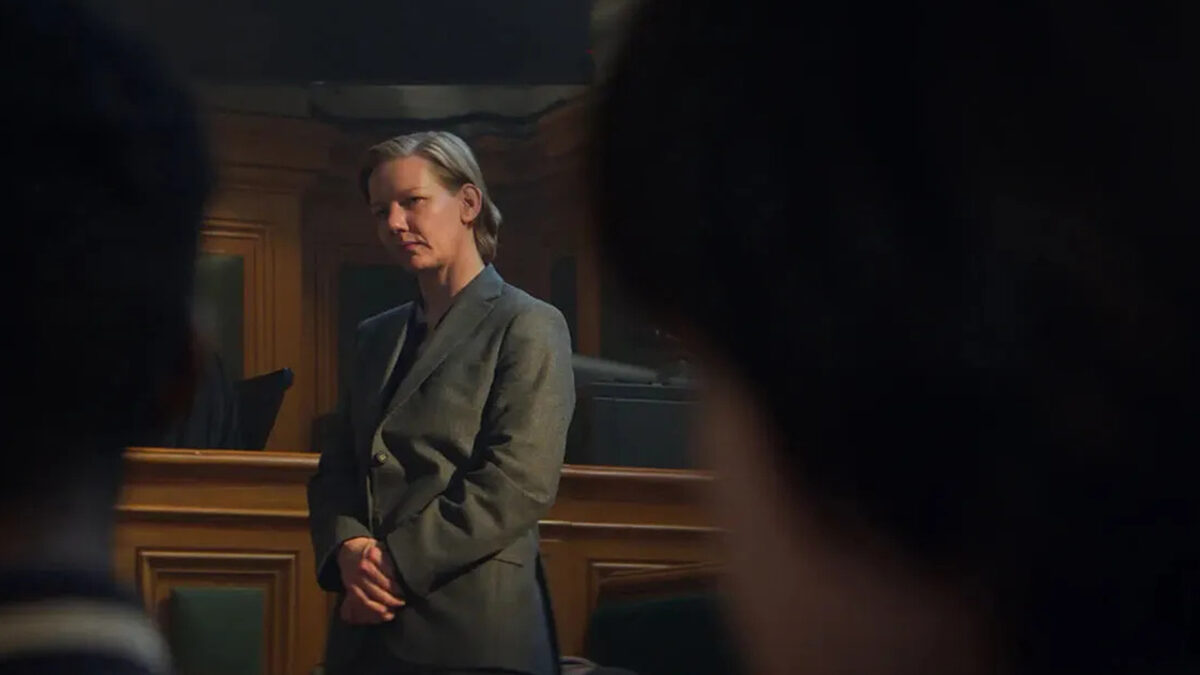Film Review | Before and After the Falls
Palme d’Or Winner 'Anatomy of a Fall' Embraces and Defies Genres

Palme d’Or Winner 'Anatomy of a Fall' Embraces and Defies Genres

In a broad-strokes, generic way, French writer-director Justine Triet‘s brilliant Anatomy of a Fall falls into time-honored genre slots. But while the film can be validly linked to the age-old traditions of the “whodunnit,” courtroom drama and the “did s/he fall or was s/he pushed?” formula, part of the genius of the film is its deft balancing act, both embracing and exploding the very genres it taps into. This feat alone helps justify the film’s prestigious Cannes festival’s Palme d’Or award — only the third time a woman has won the coveted prize.
Rules of spoiler alert engagement prohibit much in the way of plot specifics in describing this unique film. Suffice to say, the central “fall” of the title concerns the fatal plummeting of Samuel (Samuel Theis) from the attic of his family’s mountain home in Grenoble. Investigations into the death lead to suspicion that his wife Sandra (Sandra Hüller, in a subtle and stunning performance) is responsible, given evidence of marital conflicts leading up to the fateful day. In the margin between his parents — although ultimately a critical character in the tale — 11-year-old son Daniel (Milo Machado-Graner) is a partially blind “observer” through the telling of incidents, memories, and sensory impressions in the case. Daniel is also a key witness in the underscoring marriage story, a prime focus of the film beyond its legal and possible criminal elements.
The woozy blend of fiction and reality and explorations of the manipulative gray areas concocted by creative storytellers figure strongly in Anatomy, as they did in Triet’s 2019 film Sibyl. This time out, Triet pulls those ideas into a stronger focus and structural savvy. In Sibyl, our conflicted protagonist is caught up in romantic triangulations on a teetering film project. With Anatomy, Sandra is the successful writer in steadily rising sharp contrast to the frustrated writer wannabe ambitions of her husband, with tangled and conflicting storylines emerging in the courtroom. Echoes of Rashomon shiver in the margins.
Although part of Triet’s spare and, in its way, quasi-minimalist approach, the film includes a noticeable lack of a musical score. This is not to say that music is not present. Music plays a powerful role in the film’s narrative scheme. That aspect literally rings out loudly in the very opening scene, in the form of an intentionally intrusive playing of “P.I.M.P.,” (German band Bacao Rhythm & Steel Band’s instrumental cover of the 50 Cent hit), as a recurring motif later echoed in the courtroom scenes and flashbacks. Also of keen and dramatically meaningful interest, Daniel’s clumsy but earnest in-home piano performances of the rapid “Leyana,” by Spanish composer Isaac Albeniz (also renowned via its classical guitar transcription) and Chopin’s melancholic “Prelude in E minor” serve to hauntingly tether the painful post-father present with sweeter reverberations of the past.
It is impossible to convey the power of Anatomy without noting the importance of those three interwoven musical components — one of many discreet brushstrokes elevating its genre-mashing to a much higher aesthetic plane.
In a post screening Q&A with Santa Barbara International Film Festival head Roger Durling last month, Triet explained that one of the underlying themes of the tale (co-written with life partner Arthur Harari) is the gender role reversal and societal flux in terms of power within a coupling. As she put it, “men fear they’ll disappear.” Or take/be pushed into a fall.
Currently playing at the Riviera Theater through November 16. See sbiffriviera.com for showtimes. See trailer for Anatomy of a Fall here.
Please note this login is to submit events or press releases. Use this page here to login for your Independent subscription
Not a member? Sign up here.